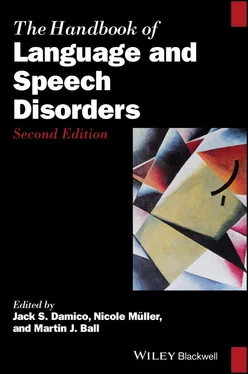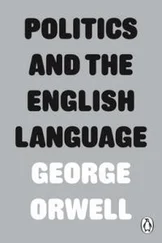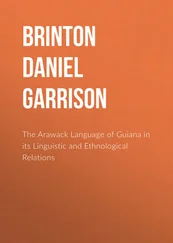The quantification of intelligibility of spontaneous speech, whether in conversational or narrative discourse, is clearly desirable because of its ecological validity. However, it is difficult, if not impossible, to score orthographic transcriptions of spontaneous speech when the number and nature of lexical targets are not definitively known. Nonetheless, the literature on children’s speech and language has reported intelligibility of spontaneous speech using speech/language samples that have been transcribed for language sample analysis. For example, the number of complete and intelligible utterances divided by the total number of utterances in a transcript has been reported as a percentage of intelligible utterances (Binger, Ragsdale, & Bustos, 2016; Rice et al., 2010; Yoder, Woynaroski, & Camarata, 2016). Similarly, Flipsen (2006) proposed methods for quantifying intelligibility of conversational speech using speech samples that were transcribed for the evaluation of phonetic development using narrow phonetic transcription by expert transcribers. Although estimates of intelligibility of spontaneous speech obtained from language sample analysis or from phonetic analysis are ecologically valid, measurement procedures have some critical limitations that may inflate estimates of intelligibility. First, typically only one individual transcribes a child’s speech, and this person is an expert in child speech and/or language and is thus not representative of an everyday communication partner that a child might encounter. Second, transcribers are usually allowed to play back recorded speech samples multiple times—a convenience unavailable in real‐life listening situations. Third, there is typically a communication partner (clinician or parent) who interacts with the child during a speech and language sample who provides considerable contextual information and who may even gloss the child’s utterances, which aids the transcriber in making sense of the speech signal. Finally, in a spontaneous speech sample context, the speaker’s intended message is not definitively known a priori because it is spontaneously generated and the content of the speech/language sample is accepted as accurate if the transcriber assigned words (possibly the wrong words) to the spoken message. For these reasons, intelligibility measures obtained from speech and language samples may provide an inflated estimate of intelligibility.
One alternative that has been used in the literature is a hybrid approach, combining elements of language sample analysis, the procedures described by Flipsen (2006), and transcription intelligibility of elicited utterances. Hodge and Gotzke (2014) measured intelligibility of spontaneously generated speech by having experts create a master transcript against which unfamiliar listener responses could be scored. They then employed unfamiliar listeners who completed orthographic transcription tasks like those described for elicited words and sentences, above, to yield a percentage intelligibility score (Hodge & Gotzke, 2014). Findings indicate that intelligibility of elicited sentences from the TOCS did not differ from intelligibility of spontaneous speech samples. This convergence of findings may be related to similarities in methods, including use of unfamiliar listeners and use of a listening task that was constrained and decontextualized. Although this type of hybrid approach may not be fully reflective of the rich context available in dynamic interaction between speaker and listener, results provide important construct validity for the use of measures such as the TOCS for understanding intelligibility in children.
4.3.2 Subjective Measures of Intelligibility
The second main approach to measurement of speech intelligibility involves subjective measures. Subjective measures of intelligibility generally require listeners to quantify their perception of a speaker’s intelligibility by assigning a number to, or scaling, what they heard (Weismer & Laures, 2002). Direct magnitude estimation (DME) procedures have been used frequently for the study of contributors to intelligibility in dysarthria. DME procedures require listeners to scale the intelligibility of speech relative to a modulus or exemplar. In contrast, use of Likert ratings, or equal appearing interval scales, requires listeners to assign numbers based on perceived similarity to anchor point descriptors (e.g., 1 = very good; 7 = very poor). Although there are a variety of problems with the use of Likert‐type ratings, there is a long history in speech‐language pathology of quantifying subjective phenomena using this approach (i.e., (Darley et al., 1969). One advantage of subjective measures is that a variety of dimensions of speech may be reflected in the numerical rating, and it is possible that intelligibility measures obtained from such a rating may reflect a more holistic view of intelligibility than transcription‐based scores.
Perhaps the most widely referenced screening guidelines and the most widely used clinical tools for speech intelligibility development in children are based on subjective ratings of intelligibility made by parents or other familiar communication partners. For example, Coplan and Gleason (1988) identified cut points for typical intelligibility development in children between 12 months and 5 years of age by asking parents to make a forced‐choice categorical rating regarding how much of their child’s speech they thought a stranger would be able to understand. However, these subjective parent ratings have not been validated with objective measures of intelligibility, thus the extent to which parents rate their child accurately relative to some objective standard is unknown.
More recently, McLeod and colleagues (McLeod, Crowe, & Shahaeian, 2015; McLeod, Harrison, & McCormack, 2012) developed the Intelligibility in Context Scale (ICS) to characterize intelligibility of children across different communication partners and contexts, as revealed by parent ratings. The ICS asks parents to rate their perception of their child’s intelligibility on a 5‐point scale across seven different contexts. Studies of the ICS have examined its relationship with segmental measures such as percentage consonants correct, percentage vowels correct, and percentage phonemes correct, as scored on standardized tests. The ICS has not been examined relative to other measures of intelligibility to our knowledge. It is widely used and has been translated into more than 60 languages (McLeod et al., 2015), however, normative data are limited and growth curves have not been developed.
In a recent study, Natzke and colleagues (Natzke, Sakash, Mahr, & Hustad, 2020) examined measures of intelligibility including percentage of intelligible utterances, parent ratings of intelligibility, and multiword transcription intelligibility scores from elicited utterance, all obtained from the same children at three longitudinal time‐points. Their results found weak associations between measures, suggesting that different measures of intelligibility are not reflective of one another even for the same children. Results also showed that not all measures were sensitive to growth over time. Large‐scale studies of intelligibility using consistent methods across the full range of development are currently underway.
4.4 Intelligibility from a Developmental Perspective
Adult speakers without communication disorders are generally assumed to be fully intelligible. However, for children, acquisition of adult‐like intelligible speech is a protracted developmental process, beginning early in the first year of life with vocal play, babbling, and word approximations, and continuing through childhood. Segmental development (acquisition of speech sounds) has been well documented in the literature. Expected age of acquisition for consonants and vowels in single words has been characterized using expert perceptual techniques (McLeod & Crowe, 2018; Smit, Hand, Freilinger, Bernthal, & Bird, 1990b). These data have been very useful to clinicians for assessing children’s speech sound development and identifying children with speech sound disorders. Developmental data indicate that English‐speaking children produce most speech sounds accurately by about 5–6 years, with adult‐like mastery expected at about 8 years (Sander, 1972; Smit, Hand, Freilinger, Bernthal, & Bird, 1990a). However, studies suggest that intelligibility is not readily predictable from phoneme data (Ertmer, 2010; Weismer, 2008; Whitehill, 2002). For example, studies have indicated that measures such as percentage of consonants correct (PCC) have a weak relationship with intelligibility (Ertmer, 2010). Generally, the number of articulation errors is negatively correlated with intelligibility; however, individuals can have significant articulation errors and still be highly intelligible (Whitehill, 2002).
Читать дальше












